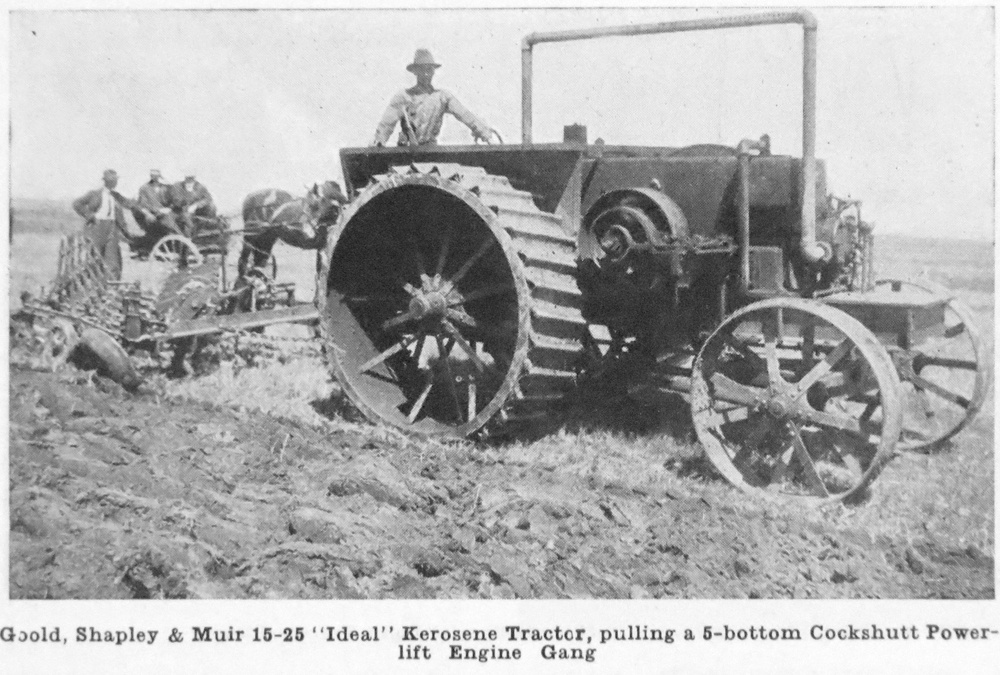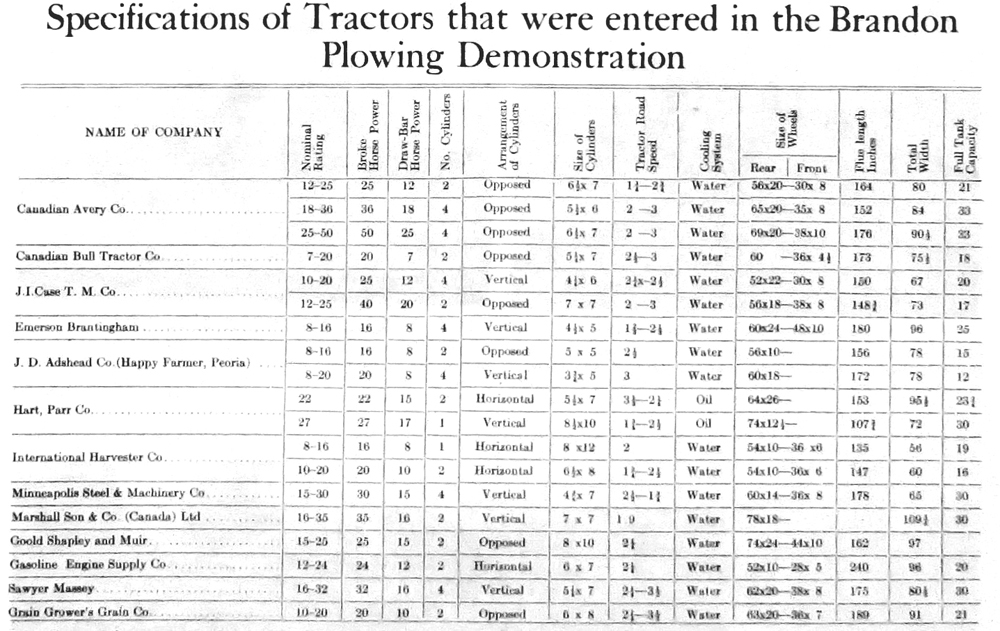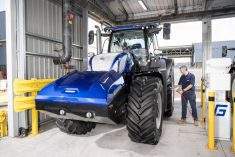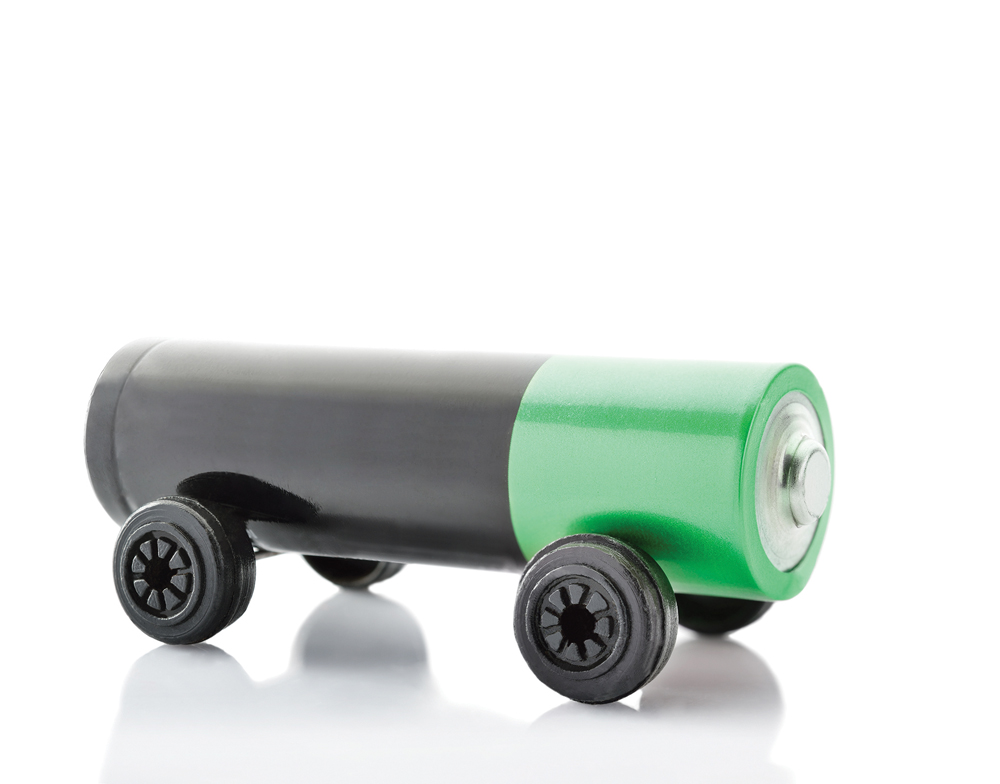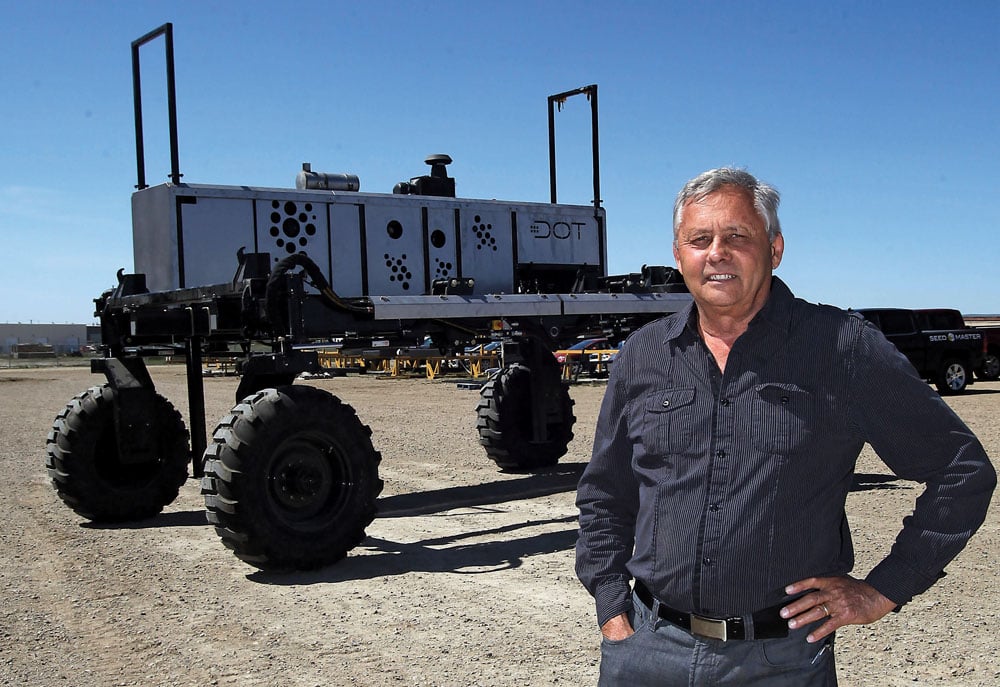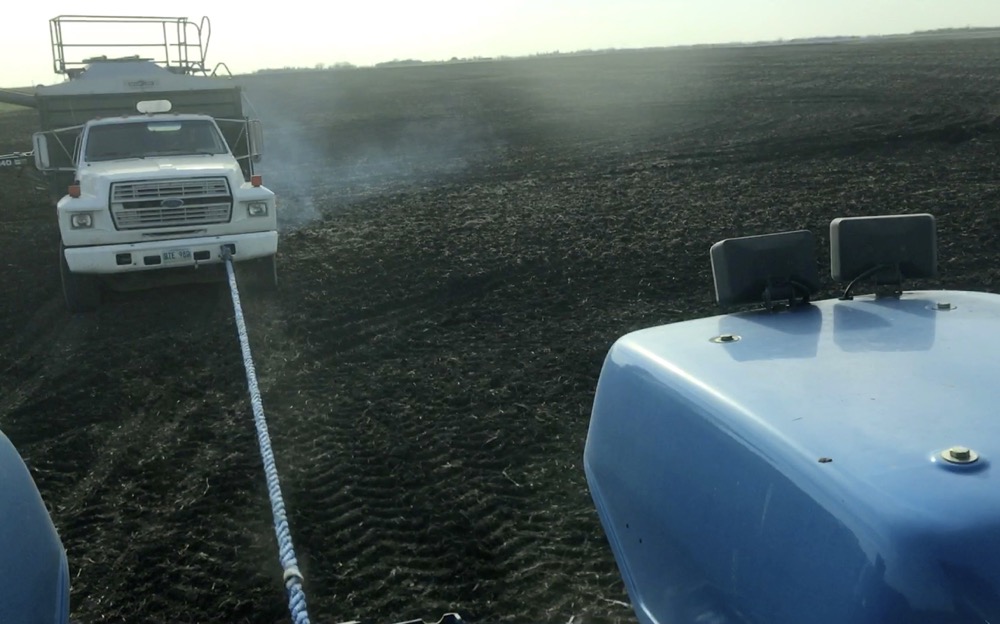While the Winnipeg Tractor Trials had come to an end in 1913, E.W. Hamilton, the editor of the Canadian Thresherman and Farmer magazine, remained interested in promoting tractors.
More importantly, the farming public remained very interested in tractors with their promise of being able to perform more work at a lower cost than horses. Hamilton was aware of the tractor demonstration days which had began to be held in the U.S. where tractor companies offered the opportunity to farmers to operate their tractors.
These events were local in nature and drew farmers from the local area. The advantage of a tractor demonstration day was that a farmer could actually operate a tractor while cultivating or performing the other tasks that it would be called upon to do on a farm. The farmer could also speak directly to a company representative. And there were no highfalutin test results that a farmer needed an engineer to interpret.
Read Also
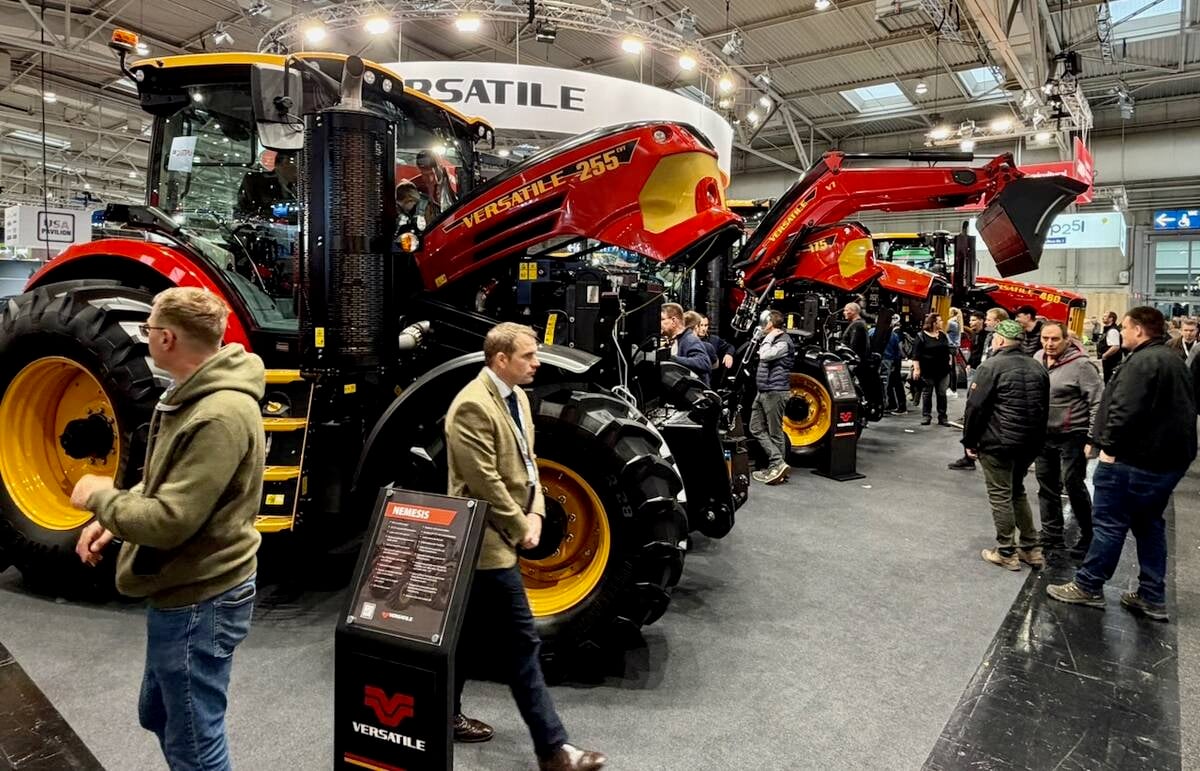
Five lessons from Agritechnica 2025
Chinese companies, autonomous farm equipment, interest in Canadian-made machinery were notable trends at Agritechnica 2025.
Demonstration days in the U.S. grew to such an extent that the Tractor Manufacturers Association set up a tractor demonstration circuit so as to better co-ordinate demonstration dates, allowing manufacturers to efficiently move equipment and representatives between demonstrations. U.S. demonstrations began with plowing but soon expanded to discing, harrowing and seeding.
In the spring of 1914 Hamilton attempted to get the Western Agricultural and Arts Association, which operated the Brandon Summer and Winter Fairs, on board with the idea of a tractor demonstration. However, the failure of the 1909 Brandon Tractor Trials weighed heavily on the association’s mind and it passed on the idea.
However, in the spring of 1916, Hamilton again approached the association and it agreed to host a demonstration for light tractors. The demonstrations were to be held during the dates of the Brandon Summer Fair of 1916. The tractor demonstrations would be held July 18, 19 and 20, 1916 between 10 a.m. and noon.
At the time the association thought that if the demonstration was held by itself, not enough people would appear to make the event worthwhile. However, if held in conjunction with the Summer Fair, farmers would appear in numbers as they could also take in the livestock events, particularly the heavy horses, for which the Brandon Summer and Winter Fairs were known for.
The Brandon Summer Fair scored a first here as the 1916 demonstration was the very first tractor demonstration to be held in Western Canada.
A field adjacent to the Summer Fair grounds was obtained to allow the tractors to demonstrate plowing to anyone who cared to attend. The field was a sandy loam soil and appears to have been worked before as the plows were fitted with stubble bottoms. When it was determined that 19 tractors would be attending the event, the field was divided into 19 plots to allow each tractor to have one plot. However, the plot size varied according to the number of plow bottoms that each tractor was pulling. So a tractor with a four-bottom plow had more land to plow than a tractor handling a two-bottom plow. The formula used allocated to each plow bottom 1.16 acres.
The rules at the Brandon demonstration were simple.
The dates of July 18, 19 and 20, 1916 between the hours of 10 a.m. to noon set for the demonstrations.
Tractors had to start plowing promptly at 10 a.m. or the tractor would not be allowed to demonstrate that day.
No tractor could be entered that pulled more than five bottoms.
Any make of plow could be pulled. Twelve-inch or 14-inch shares could be used, but the stubble mouldboards must be in use on all plows.
All plowing must be done to a uniform depth of five inches.
A tractor company could enter as many tractors as it wanted as long as they were of different types or sizes.
The tractors could travel at any speed the operator wanted and could make as many stops as the operator wanted to make. However, each tractor had to complete at least one round during the two-hour daily event.
Tractors had to be entered before July 1, 1916.
Each entry was responsible for providing any supplies necessary including the plow.
The plot of ground assigned to each entry had to be plowed before the tractor was allowed to leave at the end of the event.
A $10 entry fee was charged. In the event of a company making multiple entries, the first entry was charged $10 with subsequent entries for this company being charged $5.
This event was not a contest and no medals were awarded.
The demonstrations were in the charge of a field man who has full authority over the field.
Each tractor required six-foot-long stakes to mark out the first furrow.
All of a company’s supplies were to be removed from the field at the end of the demonstration event.
The event did not go off smoothly. On Monday, July 17, tractors were still being unloaded from railway flatcars. The Brandon railway yards were congested with cars carrying exhibits coming to the Brandon Summer Fair from the Edmonton Fair, which had just ended. It was clear that some tractors booked for the demonstrations were caught in this congestion and would not be unloaded until sometime on the 18th. To top it all off, on the evening of the 17th, a heavy rain fell. It was then decided that no demonstrations would take place on Tuesday, July 18 but rather the 18th would be taken up with the various companies staking and striking out their plots of ground in preparation for business on the 19th.
At 9:50 a.m. on the 19th, all 19 tractors were running on the start line. At 10 a.m. sharp, sharp mind you, the clutches were engaged and all 19 tractors began plowing. That many tractors in one location on the Prairies at that time was a spectacle, never mind 19 tractors plowing.
It is thought 3,700 farmers watched the first day of demonstrations and nearly 5,000 farmers the next. Given the size of Brandon at the time, the logistics of moving this many farmers in and out of the city, plus feeding them, would have been a tremendous task. These numbers indicate that farmers came from some distance around Brandon and so arrived by train or by car, horse or foot. Local newspapers reported that people had driven by car as far as 80 miles one way to attend the demonstration and then returned home by car that night. Given the state of the roads at the time and the cars available, travel by car over such distances in one day was an amazing feat.
The large number of farmers would have overwhelmed the hotel rooms available and so either many of the farmers left in the evening for home or slept in whatever stable, straw stack or ditch that was handy. Given many of them had probably homesteaded, a night in a straw stack would have held no mysteries for them. They probably drew a line at a chicken coop or a hog sty however. But whatever their abodes for the night, the number of farmers attending the event indicates how strong the interest was to see the tractors in operation.
The event was a success, with the tractor companies attending being well pleased. Letters were sent to the Canadian Thresherman and Farmer from various companies expressing their appreciation for the event.
“We have much pleasure informing you that we have no complaint to make, nor have we at the present time any suggestions to offer in regard to the demonstration at the Brandon exhibition. So far as we are concerned, this demonstration was a complete success and some of our head people from Brantford who were there report as being entirely satisfied. We can assure you that another year if a demonstration is put on, this company will be pleased to assist in every way possible to make the demonstration a success.”— Goold, Shapley & Muir.
“The plowing demonstration as a whole was certainly something that all tractor manufacturers should be interested in at this time as there are so many very small tractors being made and offered to the farmers. The farmer, of course, is only seeking the one that best suits his purpose and we believe that a more extended plowing exhibition another year should be arranged, extending the time over to the afternoon so that the farmers who come in on the excursions will have the privilege of seeing it. We were well satisfied with the demonstration itself.” — Hart Parr Company.
Given the attendance at the 1916 demonstration and the strong interest in the event from the tractor companies, a repeat of the demonstration at the Brandon Summer Fair was assured for 1917 and 1918. The 1917 event saw 48 tractors take to the field. The 1918 event appears to be the event at which the Fordson tractor made its formal appearance in Western Canada. While the demonstrations ended with the 1918 event, the Brandon Summer Fair continued to host machinery companies displaying their farm equipment.
In time this became known as “Machinery Row.” As an indication of the size Machinery Row grew to, in 1948 a million dollars of farm machinery was on display. In 1948 a million dollars was serious cash.
It is hard to gauge how significant the Brandon tractor demonstrations were to the acceptance of the tractor in Manitoba and Western Canada. However, given the number of farmers who attended the events, the Brandon demonstrations made an impact.

